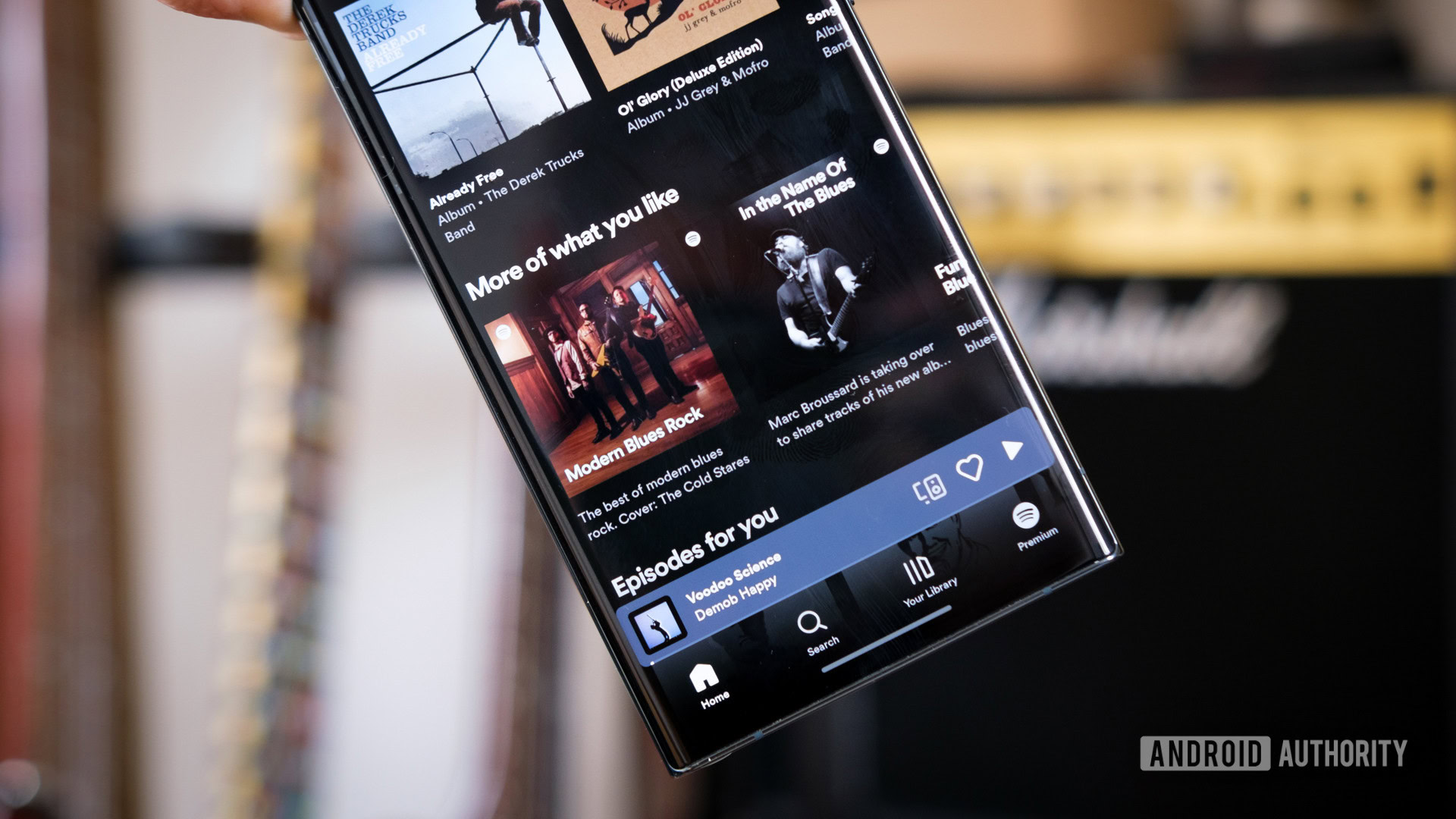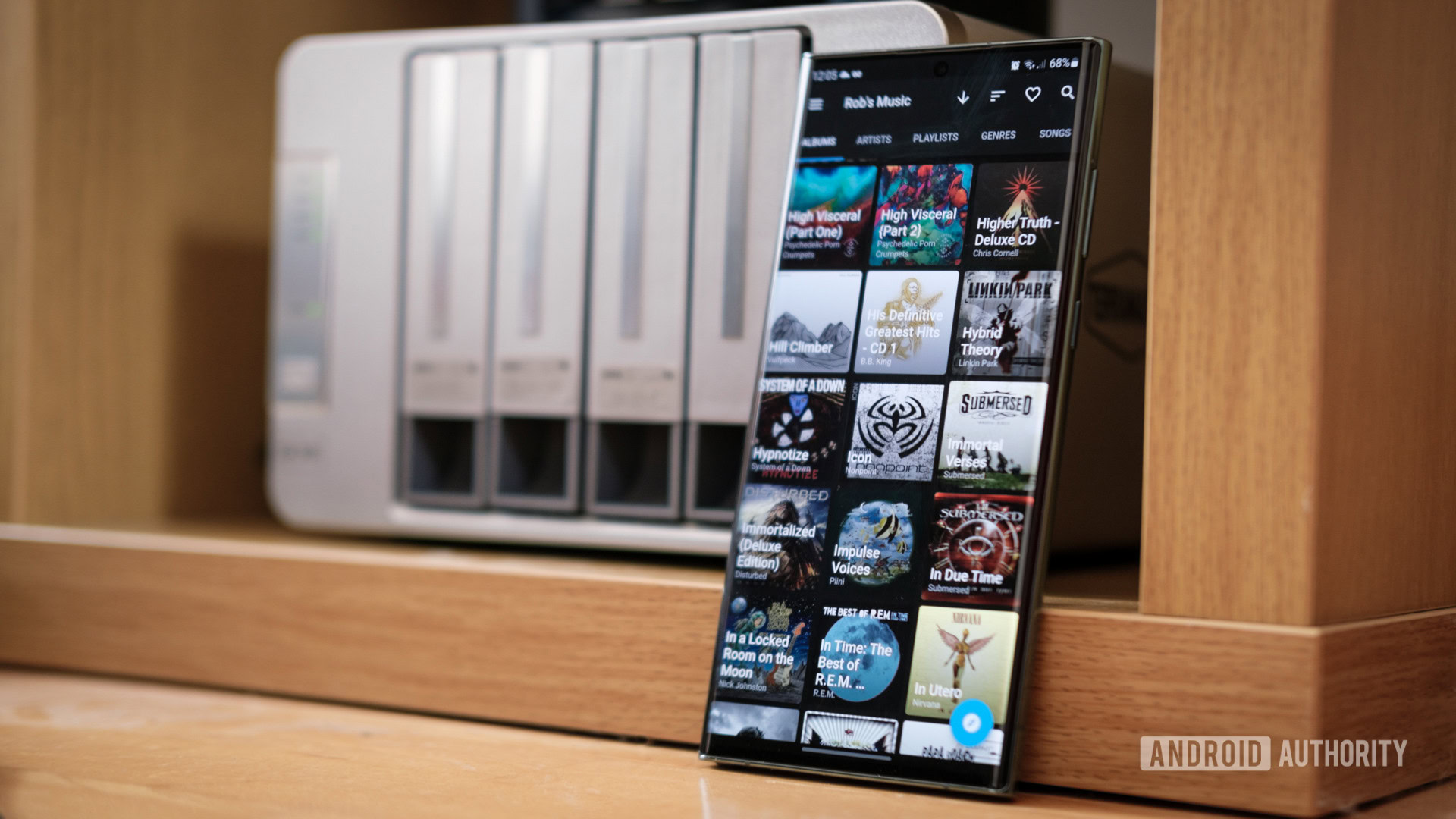
Robert Triggs / Android Authority
I still vividly remember receiving a Spotify beta invite in my college email inbox, even though it’s been well over a decade since. That day changed how I consumed music forever, or so I thought. Painstakingly ripping and syncing tunes between my PC and iPod/phone became a thing of the past, and the number of artists in my collection ballooned. But times have changed once again, and today’s overabundance of music has made streaming less, not more, valuable to me.
For a start, the early days of Spotify had very few ads, and even those were super short by today’s standards. Sticking to the free options was totally viable, especially for a cash-strapped student. But music streaming isn’t so cheap these days, as Spotify has driven users (including myself) onto plans that are increasingly less good value for money, at least in this user’s opinion.
Spotify’s family plan costs $192 a year, and price hikes are coming. If you’re into 24-bit lossless audio, TIDAL Hi-Fi or similar could set you back $240 a year. Given you can pick up digital albums for $10 to $15 (not forgetting that the artist sees a bigger share with a purchase, too), you need to consume a fair bit of new music each month to make these services worthwhile in the long run.
Once you’re set in your ways, buying is better value than streaming.
As a result, I’ve ditched my streaming subscription to return to the good old days of a physical collection, using a home NAS setup to take my music with me wherever I go. If you’re interested, I use Jellyfin as my server and the Finamp app to request MP3 transcodes from my FLAC library when on the go. But Plex, Subsonic, Navidrome and other options are equally viable.
While price is undoubtedly a factor, my main motivation for the change has been evolving listening habits. With a decade of taste refinement behind me, music discovery is less of a concern than it used to be. I already have enough favorites and guilty pleasures to last a lifetime, and have never been particularly worried about keeping up with the latest chart sensations. I’m lucky if I stumble across a new album every month. I guess that’s part of getting older, plus $200 a year to listen to (primarily) the same tracks becomes less and less good value as time goes on.
Then there’s the allure of owning rather than renting your collection. Being in complete control of artwork, metadata, and file quality scratches that collector’s itch. Jellyfin doesn’t support star ratings, lyrics, or playback stats tracking like some other platforms, but those are available elsewhere if you desire even more control over your library. (I’m currently investigating Ampache and Navidrome for this purpose).
How do you prefer to consume music?
1 votes

Robert Triggs / Android Authority
Of course, there are some notable drawbacks to ditching streaming. Finding reliable sources of affordable FLAC music isn’t easy. HDTracks has a good, albeit pricey, library, and scouring Bandcamp can work. Physical CDs are also nice to own and often quite cheap. But the buying process is more involved than simply hitting like on a new track that pops into your playlist rotation. Plus there are no more auto-curated mixes or options to revisit your favorite tracks of a particular year. Subscription models undoubtedly take the hassle out of building a gargantuan collection, providing you’re happy to keep paying for a lifetime.
I still use my free Spotify account to check stuff out before pulling the trigger on a purchase. But its ability to recommend me good new music is diminished now that it’s not my default player.
Manual discovery can be tedious but has made music feel more like a hobby again.
Still, there’s something nice about returning to the hands-on approach. Spending a couple of hours a month actively searching for new artists and scouring back catalogs has made music discovery fun again. It’s helped me branch out of my comfort zone and made music feel much more like a hobby again. Algorithms are convenient, but their recommendations don’t constantly scratch the right itch when you’re after something really different.
While it’s not quite the same as flicking through artwork at HMV, there’s still nothing quite like picking out an album you fall in love with all by yourself.
